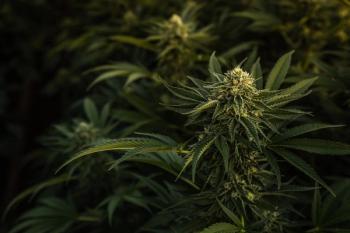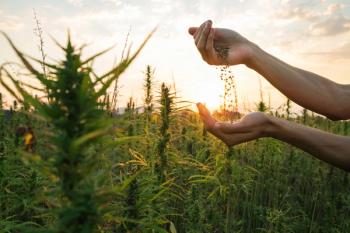
Cannabis Science and Technology
- May 2023
- Volume 4
- Issue 6
- Pages: 32-33
The Importance of Air Quality in Cannabis Cultivation
One important element of creating the ideal growing environment for cannabis is often overlooked: air quality. Here, we look at why this is important as well as best practices for mitigating poor air quality.
Cultivators put great focus into creating ideal circumstances for a healthy, voluminous cannabis yield. Most pay close attention to water quality, light delivery and control, and even humidity. However, one important element of creating the ideal growing environment for cannabis is often overlooked: air quality.
Even with standard ventilation, poor air quality can pose significant threats in a grow room. Substantial evidence exists that a lot of commercial cannabis is contaminated with mold or bacteria, and lack of grow-environment control may be directly to blame. Therefore, it is critical for cultivators to intervene with methodologies to better control cultivator-space environments.
Why Air Quality Is Such an Important Cultivation Factor for Cannabis
Controlling air quality during cannabis cultivation is a matter of public safety. The abundance of demand for legalized cannabis as a commercial crop is at its highest point. The US has the largest cannabis market, with more than $16 billion in sales in 2020 alone (1).Therefore, cannabis is rapidly growing to be a top consumer product. With so many people now reliant on the cannabis market for product, cultivators bear the responsibility of making sure the cannabis produced is as safe as possible.
Cannabis grown in a room with poor air quality is prone to mold, bacteria, and organic pathogens that could put people at risk. Organic pathogen exposure during cannabis use could cause common infections such as aspergillus or the more fatal mucor mycosis. The widely referenced UC Davis study in 2017 (2) found widespread mold and bacteria in 20 different medical cannabis samples from California growers. The issue was so apparent and concerning that many dispensaries began doing independent mold and bacteria analysis for incoming flower inventory.
Cannabis Cultivation Facilities Must Protect Their Employees
A second important reason for controlling indoor air quality in cannabis cultivation centers is to protect employees. Recent studies have found that cannabis industry workers may face greater risks of lung disease related to their occupation, such as occupationally related asthma (3). Workers are consistently exposed to airborne contaminants, including volatile organic compounds (VOCs), and other particulate matter.
Factors That Need to Be Addressed for Better Air Quality During Indoor Cultivation
Maintaining good air quality in a cannabis cultivation facility is all about implementing solutions that could help combat issues that have an effect. There are several elements that need to be controlled, such as:
- Gases, odors, and VOCs from the cannabis itself
- VOCs from insecticides, fungicides, and fertilizers
- Airborne bacteria
- Fungus and mold spores
Another important factor to control to maintain good air quality is insects. Small fungus gnats and other almost microscopic insects contribute to spreading bacteria and spores throughout the space. A well-designed air-quality control system keeps the air moving, however, which prevents pests from collecting in large numbers.
How to Mitigate Poor Air Quality to Ensure a Healthy Cultivation Process
The best plan of action is to take a three-pronged approach to mitigate poor air quality during cannabis cultivation. Below is a look at three ways to make positive changes.
1. Ensure Proper Air Circulation
Good air quality always starts with good circulation. The all-too-true adage that unmoving air is bad air applies for certain in a cultivation center. Commercial ventilation fans, air extraction systems, and vents can prevent mold development, combat issues with insects, and deter issues with bacteria.
2. Implement Adequate Air Filtration
Preventing problems with indoor air quality also relies on adequate air filtration. The air being circulated is a start, but without some level of effective filtration, you are essentially circulating the same VOCs and contaminants to some degree through the air. High-efficiency particulate air (HEPA) filtration systems work well for capturing small pollutants, and carbon filtration systems work well for capturing even smaller particulate matter that causes odors.
3. Conduct Routine Air Quality Testing
Once systems are installed to control air quality, be sure you are conducting air quality analysis as part of your operational routines. Doing so helps to keep tabs on the efficacy of your systems so you can adjust as needed to negate an obvious issue.
A Final Word for Cannabis Cultivators
Cannabis grown indoors is more vulnerable to contamination due to poor ventilation and air quality. You have a tight, humid, warm setting that cannabis needs. However, this inadvertently creates an environment more conducive to the growth of fungal spores and the spread of harmful bacteria. A small issue not quickly mitigated could easily and oftentimes inconspicuously affect an entire crop. Neglecting the importance of air quality potentially puts end consumers at risk. Therefore, monitoring air quality during cannabis cultivation must be a respected part of the process.
References
- Velur, S. Why monitoring air quality in a Cannabis cultivation facility is needed. June 28, 2022.
https://oizom.com/why-monitoring-air-quality-in-a-cannabis-cultivation-facility-is-needed/ . - Spring Hill Insider. UC Davis study identifies potentially lethal bacteria and mold in cannabis grown in northern California. December 09, 2019.
https://cannabis.ucdavis.edu/news/uc-davis-study-identifies-potentially-lethal-bacteria-and-mold-cannabis-grown-northern . - Respiratory Health and Indoor Air Quality in the Cannabis Industry.
https://deohs.washington.edu/pnash/index.php/respiratory-health-and-indoor-air-quality-cannabis-industry .
About the Author
Steve Gonzales is CEO of
How to Cite this Article:
Gonzales, S., The Importance of Air Quality in Cannabis Cultivation, Cannabis Science and Technology, 2023, 6(4), 32-33.
Articles in this issue
over 2 years ago
Chromatographic Theory, Part V: Chromatographic Resolutionover 2 years ago
Innovations in Extraction Targeting Specific Wellness GoalsNewsletter
Unlock the latest breakthroughs in cannabis science—subscribe now to get expert insights, research, and industry updates delivered to your inbox.





